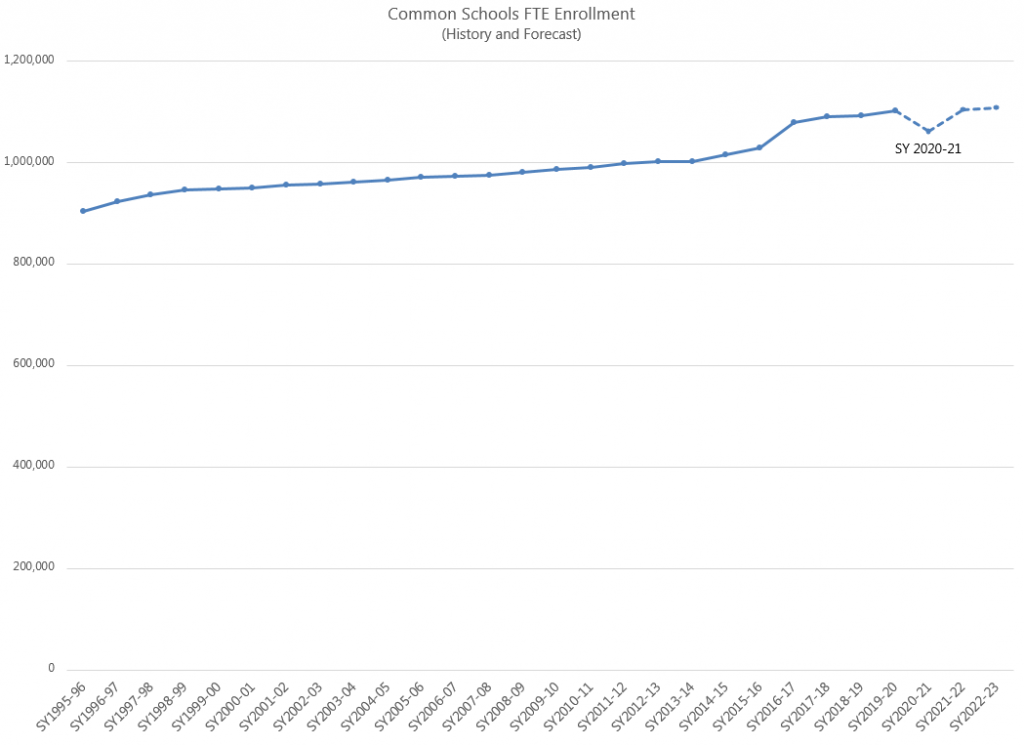2:03 pm
August 13, 2021
In June, the National Association of State Budget Officers (NASBO) released the Spring 2021 edition of the Fiscal Survey of States report. NASBO reports that 18 states reduced net general fund spending in mid-year FY 2021; 12 of those states specified that the “cuts were made in response to a revenue shortfall.” Washington reported net cuts of $653.0 million due to revenue shortfalls—the largest net cut of the 12 states. Washington’s net cuts included a reduction of $1.098 billion to K–12 spending.
This is outdated and misleading. First, the cuts reported by NASBO are based on Gov. Inslee’s proposed 2021 supplemental, not the supplemental that was enacted by the Legislature. The revenue picture improved between the time the governor made his proposal and the time the budget was enacted. The enacted 2021 supplemental appropriated $207.1 million more for public schools from funds subject to the outlook (NGFO) than the governor’s proposal would have.
Second, the enacted cuts to public schools were due to drops in enrollment, not policy reductions necessitated by a lack of revenue. The enacted 2021 supplemental reduced 2019–21 appropriations for K–12 by a net of $531.1 million (compared to the 2020 supplemental). That included reductions to the maintenance level of $747.9 million and policy level increases of $216.8 million. (The maintenance level is the cost of continuing current services, adjusted for enrollment and inflation.)

According to the June 2021 caseload forecast, school enrollment was expected to drop by 3.7% from school year (SY) 2019–20 to SY 2020–21. That is a substantial drop, and it is the first time since at least SY 1995–96 that K–12 enrollment has declined at all, as shown in the chart below. (The increase in SY 2016–17 was related to the implementation of full-day kindergarten.) Enrollment is expected to rebound in SY 2021–22, when it is expected to be 0.2% higher than SY 2019–20. The June forecast for SY 2021–22 and SY 2022–23 is slightly lower than the February 2021 forecast for those years (-0.7% and -0.8%, respectively). The June forecast notes, “In 2020-21, Common Schools enrollment declined year over year by 3.7 percent due to concerns about COVID-19 and remote/hybrid schooling. Some families opted for home-based instruction, private school instruction, and delayed their child’s enrollment in kindergarten. The forecast assumes full in-person school will resume by 2021-22.”
Among the risks to the forecast: “elementary school enrollment decisions for the 2021-22 school year will be influenced by the availability of before/after school care and concerns that future COVID-19 case growth could interrupt full-in person school.”

Meanwhile, the New York Times reports on how the pandemic affected school enrollment in SY 2020–21 nationally. Kindergarten was the grade most affected, with a 9.3% drop in enrollment nationally. Kindergarten enrollment in Washington dropped by 15.0%—the biggest drop in the country. (Oregon’s kindergarten enrollment declined by 14.6%.) The chart below shows the change in enrollment in Washington from SY 2019–20 to SY 2020–21 for each grade. (This data is from the Office of Superintendent of Public Instruction, which is what the NYT story uses.)

If schools are not back to normal in the Fall, there may well be continued maintenance level cuts to K–12 appropriations due to continued lower enrollments.
Categories: Budget , Education.